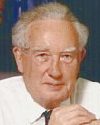
Born 8 Sep 1918; died 16 Mar 1998 at age 79. quotes
Sir Derek Harold Richard Barton was an English chemist, a joint recipient (with Norwegian Odd Hassel) of the 1969 Nobel Prize for Chemistry for research that helped establish conformational analysis (the study of the 3-D geometric structure of complex molecules). In a brief paper in Experienta entitled “The Conformation of the Steroid Nucleus” (1950), Barton showed that organic molecules in general and steroid molecules in particular could be assigned a preferred conformation based on work of chemical physicists, in particular by Odd Hassel. Conformational analysis is useful in the elucidation of configuration, in the planning of organic synthesis, and in the analysis of reaction mechanisms. It is fundamental to a complete understanding of enzymatic processes.
Sir Derek Harold Richard Barton was an English chemist, a joint recipient (with Norwegian Odd Hassel) of the 1969 Nobel Prize for Chemistry for research that helped establish conformational analysis (the study of the 3-D geometric structure of complex molecules). In a brief paper in Experienta entitled “The Conformation of the Steroid Nucleus” (1950), Barton showed that organic molecules in general and steroid molecules in particular could be assigned a preferred conformation based on work of chemical physicists, in particular by Odd Hassel. Conformational analysis is useful in the elucidation of configuration, in the planning of organic synthesis, and in the analysis of reaction mechanisms. It is fundamental to a complete understanding of enzymatic processes.
Some Recollections of Gap-Jumping (autobiography), by Derek H.R. Barton. - book suggestion.
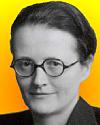
Born 8 Sep 1903; died 9 Sep 2003 at age 100.
German-British pharmacologist who left Nazi Germany for Britain and became a leading authority on neurotransmitters in the brain. In 1936 she co-authored a classic paper proving that acetylcholine from nerves originating in the spinal cord triggers movement in muscles. She later showed that the hormones epinephrine and norepinephrine help brain cells communicate. Her classic paper on sympathin, published in 1954, helped to pave the way to transforming the lives of the mentally ill. Modern anti-depressant drug therapy is grounded in increasing the availability of amines, predicated on the idea that amines are present and active in the brain in the first place, something which Vogt did much to establish.
German-British pharmacologist who left Nazi Germany for Britain and became a leading authority on neurotransmitters in the brain. In 1936 she co-authored a classic paper proving that acetylcholine from nerves originating in the spinal cord triggers movement in muscles. She later showed that the hormones epinephrine and norepinephrine help brain cells communicate. Her classic paper on sympathin, published in 1954, helped to pave the way to transforming the lives of the mentally ill. Modern anti-depressant drug therapy is grounded in increasing the availability of amines, predicated on the idea that amines are present and active in the brain in the first place, something which Vogt did much to establish.
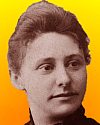
Born 8 Sep 1857; died 22 Aug 1945 at age 87.
American physiologist who invented the microelectrode in the 1930's. This small device stimulates a living cell either chemically or electrically, and records the electrical activity within the cell. Her firsts include being the first woman to graduate from the University of Heidelberg (1896), to do research at the Harvard Medical School (in the Department of Physiology) and to be elected to the American Physiology Society. The microelectrode has been said to have revolutionized neurophysiology. She researched animal cardiac movement, circulation, respiration, and nervous systems. She investigated the breathing mechanism of the horseshoe crab and the grasshopper, and the respiratory center of the skate, amphibians, and mammals.
American physiologist who invented the microelectrode in the 1930's. This small device stimulates a living cell either chemically or electrically, and records the electrical activity within the cell. Her firsts include being the first woman to graduate from the University of Heidelberg (1896), to do research at the Harvard Medical School (in the Department of Physiology) and to be elected to the American Physiology Society. The microelectrode has been said to have revolutionized neurophysiology. She researched animal cardiac movement, circulation, respiration, and nervous systems. She investigated the breathing mechanism of the horseshoe crab and the grasshopper, and the respiratory center of the skate, amphibians, and mammals.
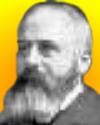
Born 8 Sep 1850; died 29 Jan 1929 at age 78. quotes
German dermatologist whose life-long interest in the skin and its diseases began before he left medical school. By 1881, he had opened a private skin clinic, but within a few years changed direction by establishing an institution where he taught students in his specialty. He became known internationally in his field after writing a book on histopathology (1884), which became a classic work. A disease he described in 1927 is still known by his name. He researched treatments for skin diseases, and introduced the use of ichtyol and resorcin. His name is also remembered for the Unna-Pappenheim stain, the most common stain for blood smears.«
German dermatologist whose life-long interest in the skin and its diseases began before he left medical school. By 1881, he had opened a private skin clinic, but within a few years changed direction by establishing an institution where he taught students in his specialty. He became known internationally in his field after writing a book on histopathology (1884), which became a classic work. A disease he described in 1927 is still known by his name. He researched treatments for skin diseases, and introduced the use of ichtyol and resorcin. His name is also remembered for the Unna-Pappenheim stain, the most common stain for blood smears.«
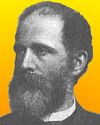
Born 8 Sep 1848; died 8 Aug 1897 at age 48.
German organic chemist who contributed greatly to knowledge of both organic and inorganic chemistry and invented an apparatus for determining vapour densities (and hence molecular weights), now named after him. In 1871, Meyer experimentally proved Avogadro's hypothesis by measuring the vapour densities of volatile substances (molecular weight, or relative molecular mass, is twice the vapour density). He went on to determine the vapour densities of inorganic substances at high temperatures. From benzene obtained from petroleum, Meyer in 1883 isolated thiophene, a heterocyclic compound containing sulphur, which much later was to become an important component of various synthetic drugs. more
German organic chemist who contributed greatly to knowledge of both organic and inorganic chemistry and invented an apparatus for determining vapour densities (and hence molecular weights), now named after him. In 1871, Meyer experimentally proved Avogadro's hypothesis by measuring the vapour densities of volatile substances (molecular weight, or relative molecular mass, is twice the vapour density). He went on to determine the vapour densities of inorganic substances at high temperatures. From benzene obtained from petroleum, Meyer in 1883 isolated thiophene, a heterocyclic compound containing sulphur, which much later was to become an important component of various synthetic drugs. more
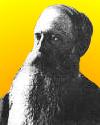
Born 8 Sep 1837; died 10 Aug 1923 at age 85.
American geologist and scientific explorer known for his studies and explorations of the iron-ore and copper deposits in the Lake Superior region in 1866-75, for which he used microscopes and thin sections for petrographic study. His major report was published in 1873. Pumpelly sensed the increasing importance of steel, and advised investors to search for iron rather than gold. Some who followed his advice made fortunes. He surveyed the coal fields of China (1864) and made the first extensive survey (1865) of the Gobi. He journeyed across Siberia by sleigh. Pumpelly found evidence that central Asia had once been occupied by vast inland seas or lakes, which had slowly diminished in size, leaving behind the Aral Sea and numerous small lakes.
American geologist and scientific explorer known for his studies and explorations of the iron-ore and copper deposits in the Lake Superior region in 1866-75, for which he used microscopes and thin sections for petrographic study. His major report was published in 1873. Pumpelly sensed the increasing importance of steel, and advised investors to search for iron rather than gold. Some who followed his advice made fortunes. He surveyed the coal fields of China (1864) and made the first extensive survey (1865) of the Gobi. He journeyed across Siberia by sleigh. Pumpelly found evidence that central Asia had once been occupied by vast inland seas or lakes, which had slowly diminished in size, leaving behind the Aral Sea and numerous small lakes.
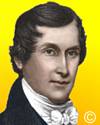
Born 8 Sep 1790; died 18 Dec 1834 at age 44. quotes
American civil engineer assisted Benjamin Wright in the construction of the Erie Canal from 1816. To prepare for building the canal, in late 1817, White travelled extensively in Great Britain visiting canals and learning construction methods. With this experience, on his return, he was Wright's principal assistant. Building locks required a hydraulic cement as mortar between the stones. Because of the high cost to import it from England, White investigated making cement from local limestone. He found rock near the canal route in Madison County was very suitable. He obtained a the first U.S. patent for waterproof cement on 1 Feb 1820. White was consulting engineer for many other canal projects, but retired young due to poor health, and died shortly after at age 44.« more
American civil engineer assisted Benjamin Wright in the construction of the Erie Canal from 1816. To prepare for building the canal, in late 1817, White travelled extensively in Great Britain visiting canals and learning construction methods. With this experience, on his return, he was Wright's principal assistant. Building locks required a hydraulic cement as mortar between the stones. Because of the high cost to import it from England, White investigated making cement from local limestone. He found rock near the canal route in Madison County was very suitable. He obtained a the first U.S. patent for waterproof cement on 1 Feb 1820. White was consulting engineer for many other canal projects, but retired young due to poor health, and died shortly after at age 44.« more
Great Engineers and Pioneers in Technology, Vol. 1, by Roland Turner and Steven L. Goulden (eds.). - book suggestion.

Born 8 Sep 1588; died 1 Sep 1648 at age 59. quotes
French mathematician, natural philosopher and theologian who discovered Mersenne numbers, a pioneering effort to derive a formula that would represent all prime numbers. Despite failing in this, his work on numbers of the form (2 p - 1), where p is prime, has been applied in the investigation of some large primes, and his formula inspired great advances in the theory of numbers. Mersenne continued some of Galileo's work in acoustics and stimulated some of Galileo’s own later discoveries. He facilitated exchange of scholarly information, such as spreading Galileo’s work outside Italy. Mersenne proposed using the pendulum as a timing device to Huygens, who first used it in a clock. He became a monk in 1611, and an ordained priest in Paris (Jul 1612).«
French mathematician, natural philosopher and theologian who discovered Mersenne numbers, a pioneering effort to derive a formula that would represent all prime numbers. Despite failing in this, his work on numbers of the form (2 p - 1), where p is prime, has been applied in the investigation of some large primes, and his formula inspired great advances in the theory of numbers. Mersenne continued some of Galileo's work in acoustics and stimulated some of Galileo’s own later discoveries. He facilitated exchange of scholarly information, such as spreading Galileo’s work outside Italy. Mersenne proposed using the pendulum as a timing device to Huygens, who first used it in a clock. He became a monk in 1611, and an ordained priest in Paris (Jul 1612).«
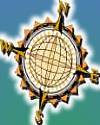
Born 8 Sep 1157; died 1217. quotes
English schoolman and scientist, who was a theology instructor at Oxford. Neckam then studied and lectured in Paris. In 1186, he returned to England, and in 1213 became abbot at Cirencester, Gloucestershire. In Paris, Neckam had learned of the mariner's compass, which the Chinese had been using for at least two centuries. In a book De utensilibus ("On Instruments") he wrote about 1180 was the first reference to the magnetic compass as being in use among the Europeans. His De naturis rerum ("On the Natures of Things"), a two-part introduction to a commentary on the Book of Ecclesiastes, is a miscellany of scientific information at that time novel in western Europe but already known to Greek and Muslim savants.«
English schoolman and scientist, who was a theology instructor at Oxford. Neckam then studied and lectured in Paris. In 1186, he returned to England, and in 1213 became abbot at Cirencester, Gloucestershire. In Paris, Neckam had learned of the mariner's compass, which the Chinese had been using for at least two centuries. In a book De utensilibus ("On Instruments") he wrote about 1180 was the first reference to the magnetic compass as being in use among the Europeans. His De naturis rerum ("On the Natures of Things"), a two-part introduction to a commentary on the Book of Ecclesiastes, is a miscellany of scientific information at that time novel in western Europe but already known to Greek and Muslim savants.«
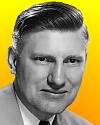
1950
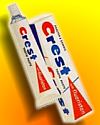
Harry Gilbert Day was an American nutritional biochemist who helped develop (with Joe Muhler and William Nebergall) the fluoride additive used in toothpaste to combat tooth decay. Proctor and Gamble (P&G) funded his research at Indiana University. In 1955, the Food and Drug administration approved stannous fluoride for use in toothpaste. P&G introduced Crest toothpaste in Jan 1956 with this ingredient, which they called fluoristan. The patent was held by Indiana University, and P&G paid royalties for its use. In his career, Day's research evaluated the health aspects of food ingredients, principles of food safety, and nutrition including the nutritional requirements of phosphorus, zinc, fluoride, boron and iron. «
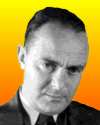
Died 8 Sep 1989 at age 91 (born 21 Mar 1898).
Austrian-American biologist who researched nerve regeneration, wound healing and the mechanics of nerve development. During World War II Weiss and his colleagues developed and tested the first practical system of preserving human tissue for later surgical grafting. His experiments on growth and development of neuronal cells led to a study of inductive interactions between tissues as contact effects. Further, he investigated organ-specific antibodies as possible catalysts in growth and differentiation of the respective organs caused by a cooperative product of cell and cell matrix interaction
Austrian-American biologist who researched nerve regeneration, wound healing and the mechanics of nerve development. During World War II Weiss and his colleagues developed and tested the first practical system of preserving human tissue for later surgical grafting. His experiments on growth and development of neuronal cells led to a study of inductive interactions between tissues as contact effects. Further, he investigated organ-specific antibodies as possible catalysts in growth and differentiation of the respective organs caused by a cooperative product of cell and cell matrix interaction
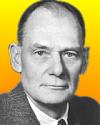
Died 8 Sep 1985 at age 88 (born 10 Feb 1897).
American virologist, microbiologist and virologist who (collaborating with Frederick C. Robbins and Thomas H. Weller) was awarded the Nobel Prize for Physiology or Medicine for 1954 for his part in cultivating the poliomyelitis virus in nonnervous-tissue cultures (1949), a preliminary step to the development of the polio vaccine. They had cultivated the polio virus in test tube cultures of human tissue for the first time. They further demonstrated that the virus could be grown on a wide variety of tissue and not just nerve cells. This at last allowed the polio virus to be studied, typed, and produced in quantity. Without such an advance the triumphs of Albert Sabin and Jonas Salk in developing a vaccine against polio in the 1950s would have been impossible.
American virologist, microbiologist and virologist who (collaborating with Frederick C. Robbins and Thomas H. Weller) was awarded the Nobel Prize for Physiology or Medicine for 1954 for his part in cultivating the poliomyelitis virus in nonnervous-tissue cultures (1949), a preliminary step to the development of the polio vaccine. They had cultivated the polio virus in test tube cultures of human tissue for the first time. They further demonstrated that the virus could be grown on a wide variety of tissue and not just nerve cells. This at last allowed the polio virus to be studied, typed, and produced in quantity. Without such an advance the triumphs of Albert Sabin and Jonas Salk in developing a vaccine against polio in the 1950s would have been impossible.
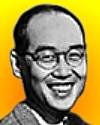
Died 8 Sep 1981 at age 74 (born 23 Jan 1907). quotes
Japanese physician and physicist who shared the 1949 Nobel Prize for Physics for “his prediction of the existence of mesons on the basis of theoretical work on nuclear forces.” In his 1935 paper, On the Interaction of Elementary Particles*, he proposed a new field theory of nuclear forces that predicted the existence of the previously unknown meson. Mesons are particles heavier than electrons but lighter than protons. One type of meson was subsequently discovered in cosmic rays in 1937 by American physicists, encouraging him to further develop meson theory. From 1947, he worked mainly on the general theory of elementary particles in connection with the concept of the “non-local” field. He was the first Japanese Nobel Prize winner.«*Proc.Phys.-Math. Soc.Japan, 17, p. 48.
Japanese physician and physicist who shared the 1949 Nobel Prize for Physics for “his prediction of the existence of mesons on the basis of theoretical work on nuclear forces.” In his 1935 paper, On the Interaction of Elementary Particles*, he proposed a new field theory of nuclear forces that predicted the existence of the previously unknown meson. Mesons are particles heavier than electrons but lighter than protons. One type of meson was subsequently discovered in cosmic rays in 1937 by American physicists, encouraging him to further develop meson theory. From 1947, he worked mainly on the general theory of elementary particles in connection with the concept of the “non-local” field. He was the first Japanese Nobel Prize winner.«*Proc.Phys.-Math. Soc.Japan, 17, p. 48.
Tabibito (The Traveler), by Hideki Yukawa. - book suggestion.
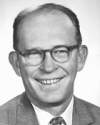
Died 8 Sep 1980 at age 71 (born 17 Dec 1908). quotes
American chemist whose technique of carbon-14 (or radiocarbon) dating provided an extremely valuable tool for archaeologists, anthropologists, and earth scientists. For this development he was honoured with the Nobel Prize for Chemistry in 1960. Libby is a specialist in radiochemistry, particularly hot atom chemistry, tracer techniques, and isotope tracer work. He became well-known at Chicago University also for his work with natural tritium, and its use in hydrology and geophysics. On 18 May 1952, he determined that the age of Stonehenge was 1848 BC, based on analysis of radioisotopes in charcoal.
American chemist whose technique of carbon-14 (or radiocarbon) dating provided an extremely valuable tool for archaeologists, anthropologists, and earth scientists. For this development he was honoured with the Nobel Prize for Chemistry in 1960. Libby is a specialist in radiochemistry, particularly hot atom chemistry, tracer techniques, and isotope tracer work. He became well-known at Chicago University also for his work with natural tritium, and its use in hydrology and geophysics. On 18 May 1952, he determined that the age of Stonehenge was 1848 BC, based on analysis of radioisotopes in charcoal.
Radiocarbon Dating, by Willard F. Libby. - book suggestion.
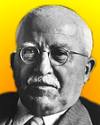
Died 8 Sep 1965 at age 84 (born 23 Mar 1881). quotes
German chemist who received the 1953 Nobel Prize for Chemistry for his discovery of the structure of polymers as long-chain molecules. In 1910, he developed a new, simple synthesis for isoprene, the basic molecular unit in synthetic rubber. By the 1920's, Staudinger had formed his view that polymer molecules could be very long chain of repeating units joined by normal chemical bonds, rather than the prevailing view that polymers were merely a disorderly aggregation of smaller molecules held together by some other forces. He coined the term macromolecule (1922). Eventually X-ray crystallography confirmed his long-chain structure of polymers. His work was a major contribution to molecular biology.«
German chemist who received the 1953 Nobel Prize for Chemistry for his discovery of the structure of polymers as long-chain molecules. In 1910, he developed a new, simple synthesis for isoprene, the basic molecular unit in synthetic rubber. By the 1920's, Staudinger had formed his view that polymer molecules could be very long chain of repeating units joined by normal chemical bonds, rather than the prevailing view that polymers were merely a disorderly aggregation of smaller molecules held together by some other forces. He coined the term macromolecule (1922). Eventually X-ray crystallography confirmed his long-chain structure of polymers. His work was a major contribution to molecular biology.«
From Organic Chemistry to Macromolecules (autobiography), by Hermann Staudinger. - book suggestion.
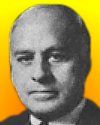
Died 8 Sep 1965 at age 85 (born 25 Aug 1880).
American inventor of electric model trains who founded the Lionel Corporation (1901), which became the largest U.S. toy train manufacturer. At age 18, he had invented a fuse to ignite the magnesium powder for flash photography, which the Navy Department bought from him to be a fuse to detonate submarine mines. He designed an early battery tube light, but without practical application. (His partner, Conrad Hubert, to whom he gave the rights improved it and founded the Eveready Flashlight Company.) At age 22, he created a battery-powered train engine intended only as an eye-catcher for other goods in a store window. To his surprise, many customers wanted to purchase the toy train. Thus he started a model railroad company.«
American inventor of electric model trains who founded the Lionel Corporation (1901), which became the largest U.S. toy train manufacturer. At age 18, he had invented a fuse to ignite the magnesium powder for flash photography, which the Navy Department bought from him to be a fuse to detonate submarine mines. He designed an early battery tube light, but without practical application. (His partner, Conrad Hubert, to whom he gave the rights improved it and founded the Eveready Flashlight Company.) At age 22, he created a battery-powered train engine intended only as an eye-catcher for other goods in a store window. To his surprise, many customers wanted to purchase the toy train. Thus he started a model railroad company.«
All Aboard: The Story of Joshua Lionel Cowen & His Lionel Train Company, by Ron Hollander. - book suggestion.
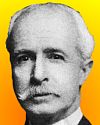
Died 8 Sep 1920 at age 63 (born 21 Jan 1857).
American geologist who advanced understanding in the field of petrology - the study of the origin, composition, structure, and alteration of rocks. Around 1880, he was one of the first in the U.S. to study thin rock sections with a microscope. He explored and mapped the geology of Yellowstone National Park during seven field seasons (1883-1890). From this study he introduced original ideas concerning the range of crystal line textures and mineral composition of granular igneous rocks. He proposed that physical and chemical conditions causing differences in the formationof neighbouring igneous rock from the same igneous magma. Further, he rejected the prevailing view that granular rocks were only formed in large masses at depth.«
American geologist who advanced understanding in the field of petrology - the study of the origin, composition, structure, and alteration of rocks. Around 1880, he was one of the first in the U.S. to study thin rock sections with a microscope. He explored and mapped the geology of Yellowstone National Park during seven field seasons (1883-1890). From this study he introduced original ideas concerning the range of crystal line textures and mineral composition of granular igneous rocks. He proposed that physical and chemical conditions causing differences in the formationof neighbouring igneous rock from the same igneous magma. Further, he rejected the prevailing view that granular rocks were only formed in large masses at depth.«
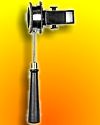
Ophthalmoscope
Hermann Ludwig Ferdinand von Helmholtz was a German physiologist and physicist who contribed much to physiology, optics, electrodynamics, mathematics, and meteorology, including the law of the conservation of energy (1847). He also developed thermodynamics, in particular introducing concept of free energy. In 1850, he measured the speed of a nerve impulse and, in 1851, invented the ophthalmoscope. He discovered the function of the cochlea in the inner ear and developed Thomas Young's theory of colour vision (published 1856). His study of muscle action led him to formulate a much more accurate theory concerning the conservation of energy than earlier proposed by Robert Mayer and James Joule.
Hermann von Helmholtz and the Foundations of Nineteenth-Century Science, by David Cahan. - book suggestion.
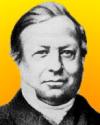
Died 8 Sep 1882 at age 73 (born 24 Mar 1809). quotes
French mathematician who discovered transcendental numbers (those which are not the roots of algebraic equations having rational coefficients), and that there are infinitely many of them. He also did work in real and complex analysis, number theory, and differential geometry. His name is remembered in the Sturm-Liouville theory of differential equations that generalises Joseph Fourier's ideas, and are important in mathematical physics. He studied celestial mechanics. Liouville founded in 1836, and editted for nearly four decades, the Journal de Mathématique which remains a leading French mathematical publication. He editted and published (1843) the manuscripts left behind upon the untimely death of Evariste Galois 22 years earlier.«
French mathematician who discovered transcendental numbers (those which are not the roots of algebraic equations having rational coefficients), and that there are infinitely many of them. He also did work in real and complex analysis, number theory, and differential geometry. His name is remembered in the Sturm-Liouville theory of differential equations that generalises Joseph Fourier's ideas, and are important in mathematical physics. He studied celestial mechanics. Liouville founded in 1836, and editted for nearly four decades, the Journal de Mathématique which remains a leading French mathematical publication. He editted and published (1843) the manuscripts left behind upon the untimely death of Evariste Galois 22 years earlier.«
Joseph Liouville 1809-1882: Master of Pure and Applied Mathematics, by Jesper Lützen. - book suggestion.
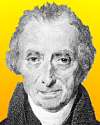
Died 8 Sep 1811 at age 69 (born 22 Sep 1741).
German naturalist who was a pioneer in zoogeography by going beyond merely cataloging specimens with simple descriptions, but included observations of causal relationships between animals and their environment. He looked for hidden regularities in natural phenomena over an extreme range of habitats. His extensive field studies made on expeditions in Russia resulted in records of hundreds of species of animals and plants together with commentary on the interrelationships among them and their environment, and careful notes on the areas of distribution and boundaries. This work was a precursor to theories of evolution. He was first to theorise that mountain formation resulted from volcanic processes causing uplifts and receding seas.«
German naturalist who was a pioneer in zoogeography by going beyond merely cataloging specimens with simple descriptions, but included observations of causal relationships between animals and their environment. He looked for hidden regularities in natural phenomena over an extreme range of habitats. His extensive field studies made on expeditions in Russia resulted in records of hundreds of species of animals and plants together with commentary on the interrelationships among them and their environment, and careful notes on the areas of distribution and boundaries. This work was a precursor to theories of evolution. He was first to theorise that mountain formation resulted from volcanic processes causing uplifts and receding seas.«
Bering's Successors, 1745-1780: Contributions of Peter Simon Pallas..., by Peter Simon Pallas. - book suggestion.
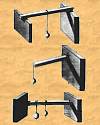
Died 8 Sep 1761 (born 1698).
French military engineer and civil engineer who made early contributions to engineering mechanics. Some of his many books deal with principles of ballistics and fortifications; others cover hydraulic, civil, and military engineering. His classics became widely-used reference works for a century, full of practical information to architects and builders. The illustrated text gave model specifications, rules and tables to meet their needs, say, for building foundations or arches, and other aspects such as making plans and how to direct labour. He joined Jacques Cassini and Phillippe de la Hire to survey the meridian from Paris to the English Channel. His Architecture hydraulique was the first work of its kind to apply integral calculus to practical problems.«[Image: illustrations of loaded beams from La scienza degli ingegneri, 1729.]
French military engineer and civil engineer who made early contributions to engineering mechanics. Some of his many books deal with principles of ballistics and fortifications; others cover hydraulic, civil, and military engineering. His classics became widely-used reference works for a century, full of practical information to architects and builders. The illustrated text gave model specifications, rules and tables to meet their needs, say, for building foundations or arches, and other aspects such as making plans and how to direct labour. He joined Jacques Cassini and Phillippe de la Hire to survey the meridian from Paris to the English Channel. His Architecture hydraulique was the first work of its kind to apply integral calculus to practical problems.«[Image: illustrations of loaded beams from La scienza degli ingegneri, 1729.]

In 2040, the first visible conjunction during the 21st century of the crescent Moon with the five naked-eye visible planets - Mercury, Venus, Mars, Jupiter and Saturn - will occur. They will be seen clustered within a small distance of each other in the early evening sky, well east of the sun. When a similar grouping happened in the sky on 5 May 2000, the Moon and the same five planets were lost to view because of the glare of the Sun from among them.«[Image: artist's conception of the conjunction within 9º of the moon and three planets (Mars, Jupiter and Saturn) as viewed on 6 Apr 2000.]
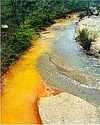
In 1983, the addition of the highly toxic polluted area of Tar Creek at Pitcher, Oklahoma, was finalized by the U.S. E.P.A. for Superfund Cleanup. Decades of underground mining left a vast area covered with chat (spoil heaps) after extracting lead and zinc ore for decades. Toxic dust spread everywhere in the wind, endangering the health of the town’s population, especially children with elevated lead levels in their bodies. The mining had produced most of the metal used by the U.S. for the ammunition used in the two World Wars. But now, ground was subsiding, soil was contaminated, and orange acidic mine water poisoned ground and surface waters with the toxic metals. The government bought out the residents.«
Tar Creek: A History of the Quapaw Indians, the World's Largest Lead and Zinc Discovery, and The Tar Creek Superfund Site, by Larry G. Johnson. - book suggestion.
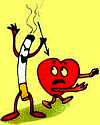
In 1961, statistical evidence linking heavy smoking with heart disease was reported in the Journal of the American Medical Association. Drs. Daniel J Nathan and Dr. David M. Spain had studed 3,000 men. They found that for smokers of over 40 cigarettes daily and aged under 51 years, their chance of having coronary heart disease almost doubled. Further, among those studied that had coronary heart disease, 57% of heavy smokers suffered heart attacks, as compared to only 31% of light smokers. The doctors said it remained an "open question" whether the statistics were proof that heavy smoking was a cause of hardening of coronary arteries. Only a four-sentence article on page 3 appeared in the New York Times.«*

In 1945, a two-way radio was placed in service on a U.S. bus for the first time. Arnold Lines (the Washington, Virginia and Maryland Coach Company) had made tests with the two-way radio two months earlier on 8 Jul. Two months later, on 13 Nov, the Federal Communications Commission (FCC) granted a permanent license for its operation.«[Image: A Greyhound coach from the 1945 period shown by the Pacific Bus Museum.]
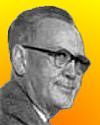

A Century of Innovation – The 3M Story, by W. James McNerney Jr. - book suggestion.
In 1854, Dr. John Snow removed the handle of the Broad Street water pump in London, thus effectively halting further spread of cholera. He had mapped the outbreaks, and thus suspected contamination of this community source of water. He was correct in this, one of the most symbolic gestures in the history of public health. Within days after the pump handle was removed, new cases of illness had ceased. Site investigation showed raw sewage from a leaking sewage cesspool that had contaminated the well water. Thus Snow, who was already a celebrated anaesthetist became a pioneer of epidemiology. The "John Snow" pub now stands beside the pink granite slab marking the site of the original pump.«
Cholera, Chloroform and the Science of Medicine: A Life of John Snow, by Peter Vinten-Johansen. - book suggestion.




